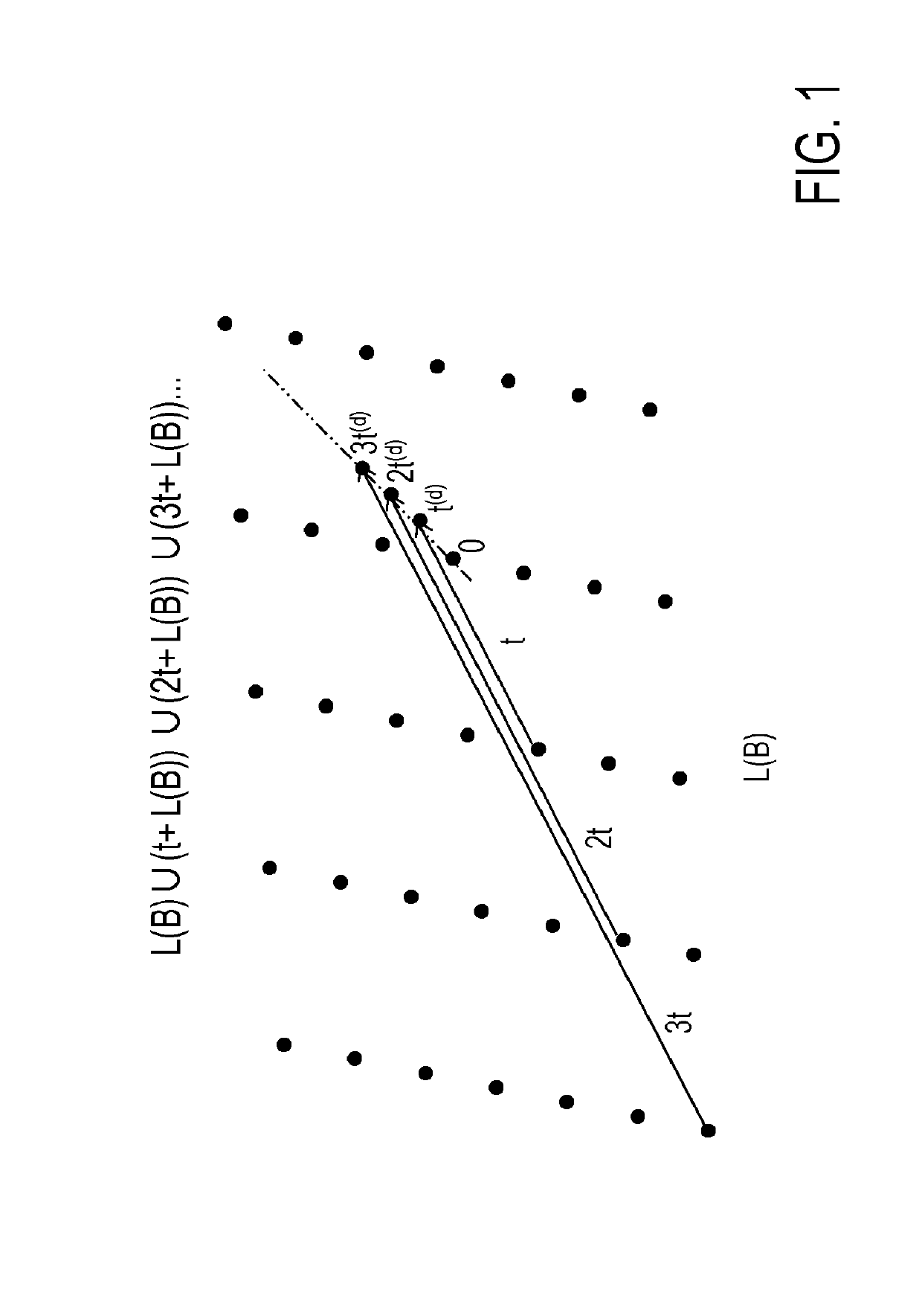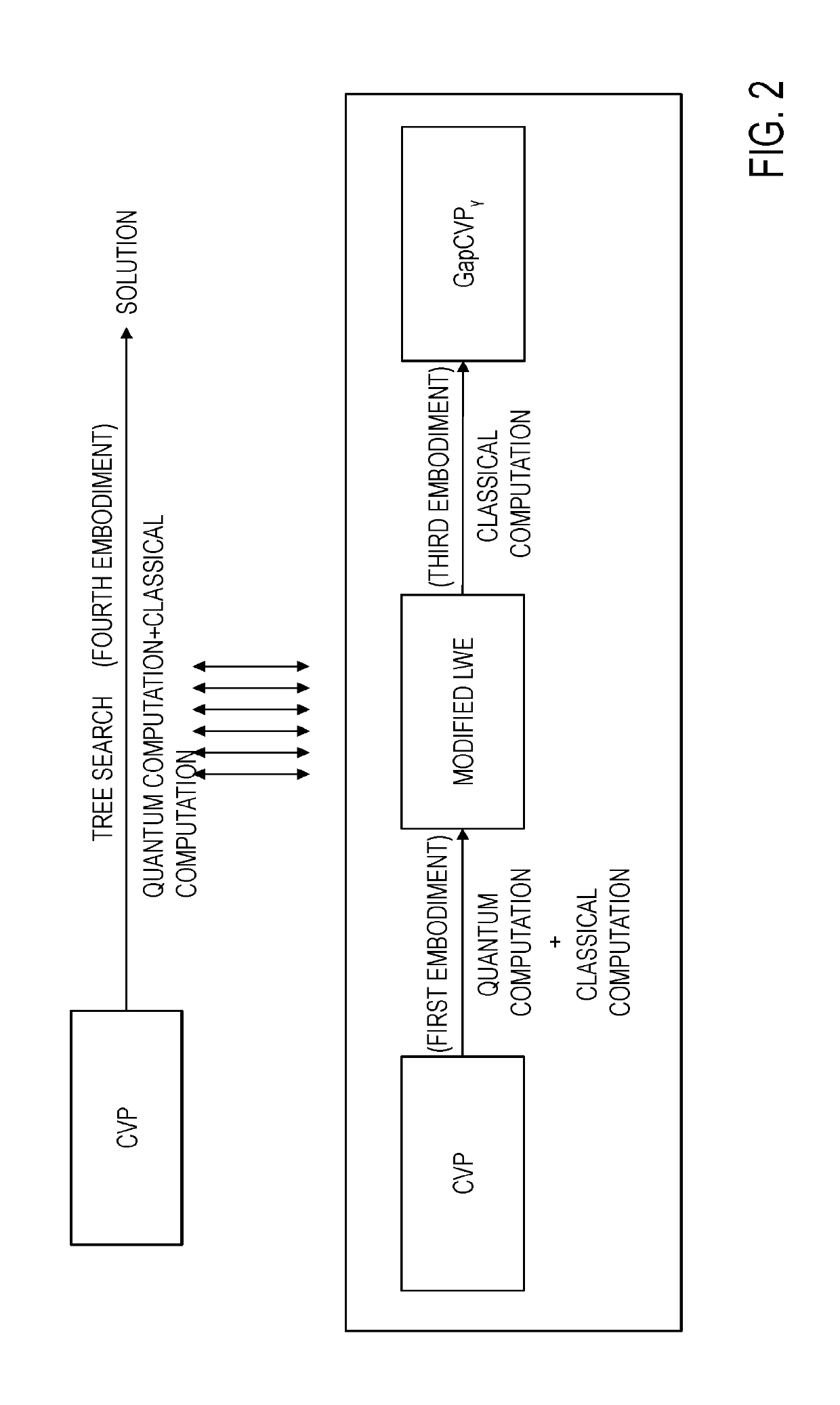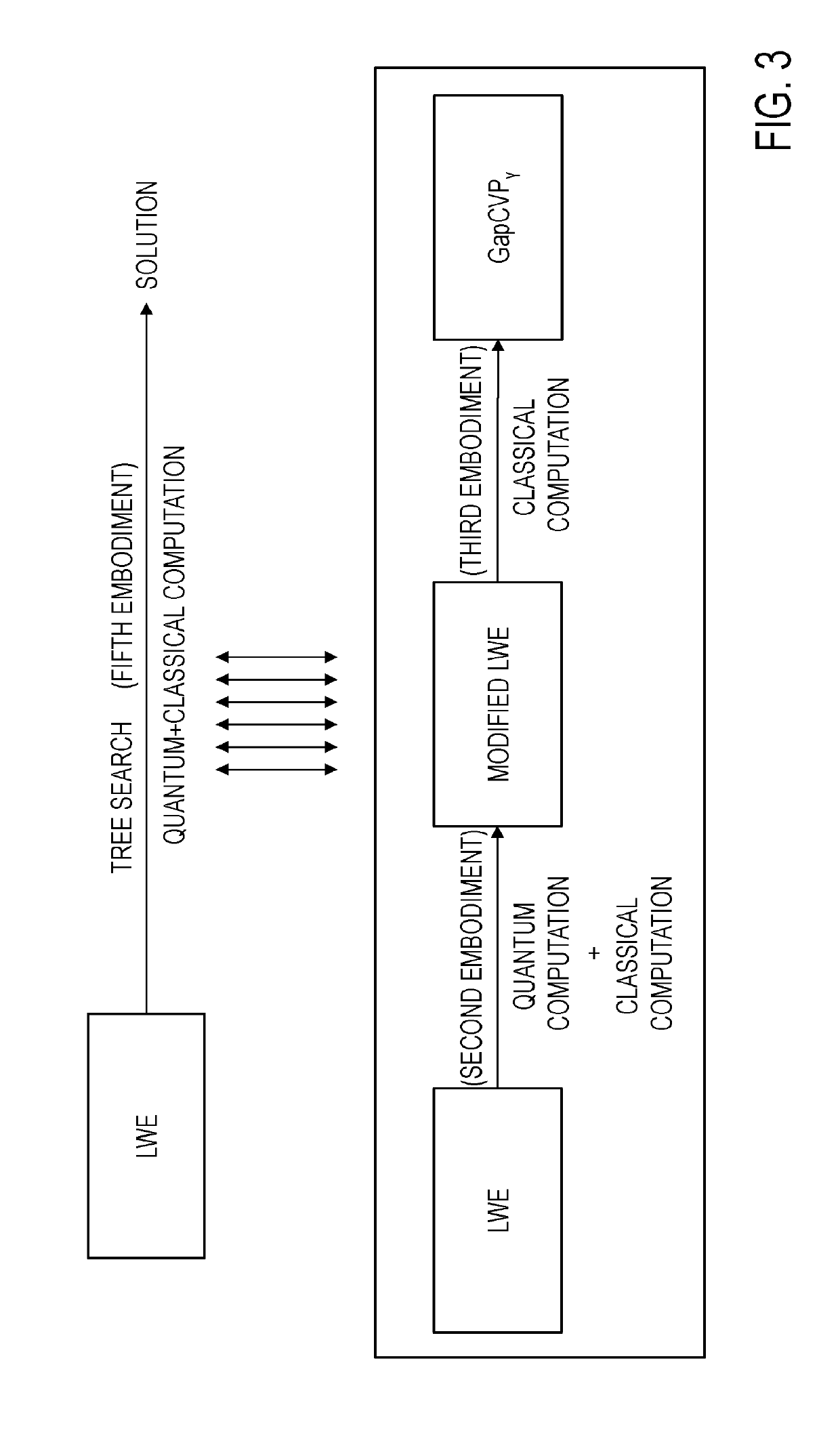Transformation apparatus, decision apparatus, quantum computation apparatus, and quantum machine learning system
- Summary
- Abstract
- Description
- Claims
- Application Information
AI Technical Summary
Benefits of technology
Problems solved by technology
Method used
Image
Examples
first embodiment
[0099]In a first embodiment, the CVP is transformed into the modified LWE by an operation (quantum computation) through a quantum computer and an operation (classical computation) through a classical computer (FIG. 2).
[0100]This embodiment has an object to transform the CVP into the modified LWE, which is a problem that can be computed at high speed on a quantum computer. Specifically, the parameters identifying the modified LWE problem corresponding to the input CVP are computed using the quantum computation and the classical computation.
[0101]A basic idea is described. In general, the lattice problem is believed to be difficult to be dealt with by the quantum computer, because the lattice problem has no periodicity with respect to the solution. However, the lattice has a structure symmetrical with respect to each lattice point. Accordingly, the periodicity with respect to the solution can be made. In this embodiment, quantum computation is performed using the periodicity of soluti...
second embodiment
[0136]In a second embodiment, the LWE is transformed into the modified LWE by computation (quantum computation) through the quantum computer and computation (classical computation) through the classical computer (FIG. 3). Hereinafter, the difference from the first embodiment is mainly described. The same reference numerals are used for the items having already been described, and the description thereof is omitted.
[0137]As shown in FIG. 4, a transformation apparatus 2 of this embodiment includes classical computers 21 and 13 (first and second classical computers), a quantum computer 12, and a controller 14. The transformation apparatus 2 includes processing circuitry configured to implement the classical computers 21 and 13 (first and second classical computers), the quantum computer 12, and the controller 14.
[0138]The processes of this embodiment are described. The transformation apparatus 2 of this embodiment outputs {rji(c), rji(d),rj0} and m, M and N satisfying Formula (5) descr...
third embodiment
[0151]In a third embodiment, GapCVPγ for the modified LWE transformed in the first embodiment or the second embodiment is solved by the classical computation (FIGS. 2 and 3). That is, it is decided whether the difference vector t(d) satisfying Formula (5) identified by {rji(c), rji(d), rj0} and m, M and N obtained in the first embodiment or the second embodiment satisfies ∥t(d)∥≤L or satisfies ∥t(d)∥>γL.
[0152]
[0153]As exemplified in FIG. 8, a decision apparatus 3 of this embodiment includes a vector generator 31, a probability selector 32, a hyperplane distance estimator 33, a decision unit 34, and a controller 35. The decision apparatus 3 includes processing circuitry configured to implement the vector generator 31, the probability selector 32, the hyperplane distance estimator 33, the decision unit 34, and the controller 35. The decision apparatus 3 executes each process under control of the controller 35. As exemplified in FIG. 9, the hyperplane distance estimator 33 of this embo...
PUM
 Login to View More
Login to View More Abstract
Description
Claims
Application Information
 Login to View More
Login to View More - R&D
- Intellectual Property
- Life Sciences
- Materials
- Tech Scout
- Unparalleled Data Quality
- Higher Quality Content
- 60% Fewer Hallucinations
Browse by: Latest US Patents, China's latest patents, Technical Efficacy Thesaurus, Application Domain, Technology Topic, Popular Technical Reports.
© 2025 PatSnap. All rights reserved.Legal|Privacy policy|Modern Slavery Act Transparency Statement|Sitemap|About US| Contact US: help@patsnap.com



